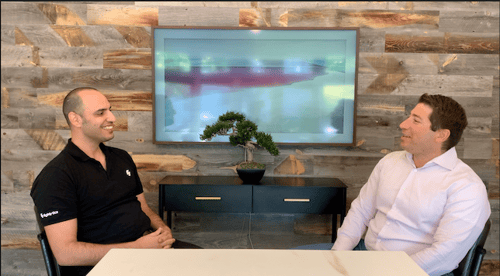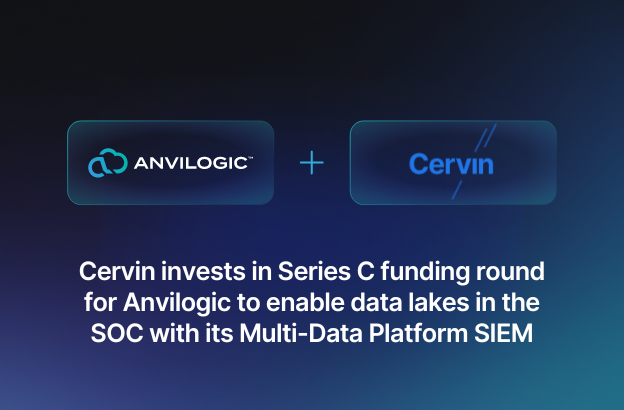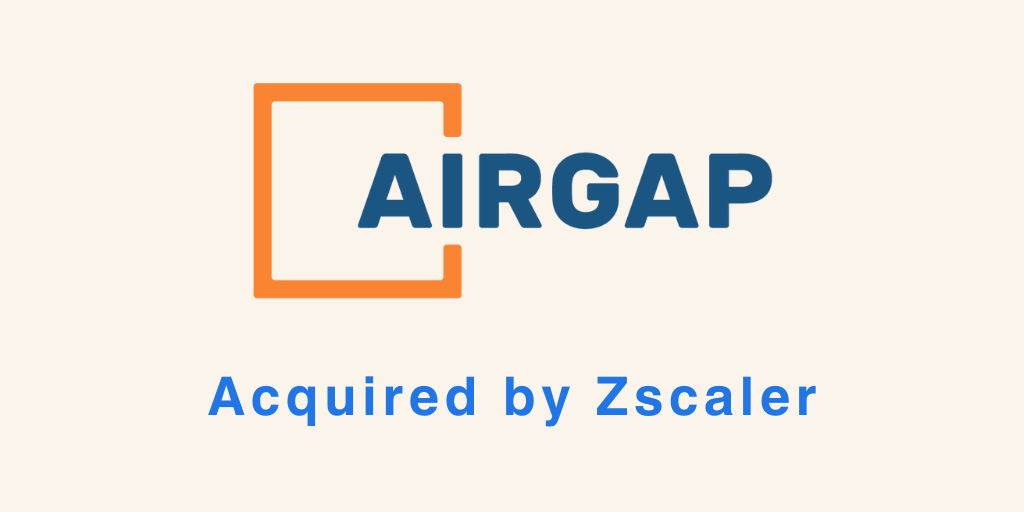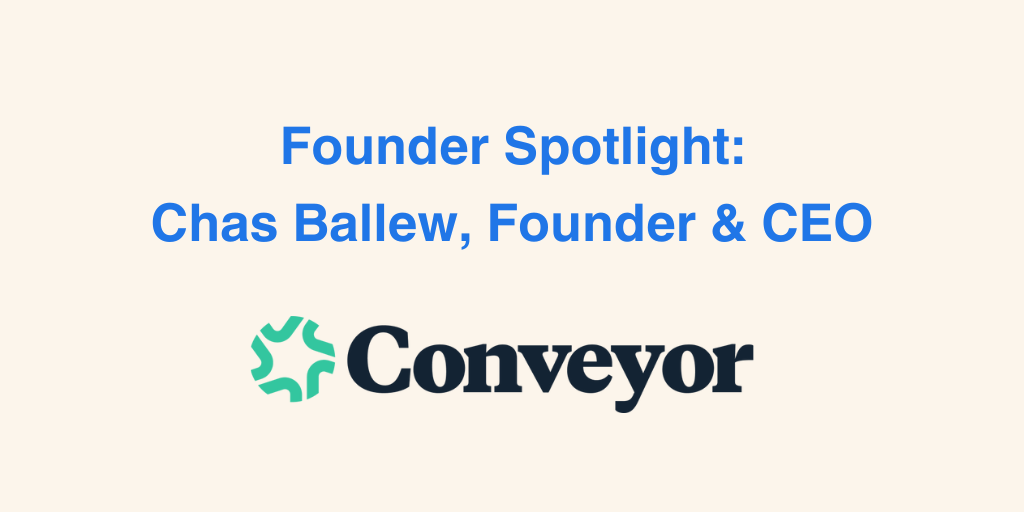DK: That makes a ton of sense. It’s a good segway to another point - you talk about what inspired you, you talk about where the industry was at the time and the gap that you see between hyperscalers and the rest of the industry.
OS: Which is a huge gap by the way.
DK: And you decided to sort of become part of the cloud and the hyperscalers ecosystem in a sense and take some of the learnings that you had in the data centers and try to apply it to a new environment, which is the cloud-centered environment. But the skill deficit is still there, so talk a little bit about the vision of closing that skill deficit.
OS: The day after we left Mellanox, we thought of applying this vision to the needs of other private data center companies, but because of that fact that in each one of the infrastructures there have so many different vendors and the fact that adaption of infrastructure in cloud was growing faster than in the data center domain, we felt it would make less sense to bring these principles into the data center domain. On the other hand, in the cloud, 90% of companies - the infrastructure is connected through a cloud provider’s standardized stack and you have common APIs for Amazon AWS. Moreover, there was a second pillar working in our advantage, which was the persona type of the DevOps engineers. Those teams are more innovative and are in charge of all aspects of the production. Combining these factors together, drove us to focus on the cloud instead of the data center domain, while still leveraging the principles that we have seen from the data center domain, so to bring a new prism into the cloud. For example, we came from Mellanox, which is now part of Nvidia. Mellanox has a lot of knowledge in silicon engineering. The process of developing new silicon chips costs around 10’s of millions of dollars and takes more than one year. Silicon companies developed processes to avoid bugs in the production process of the chipset, (called tape-out) by building simulators that imitate the behavior of silicon. We took the concept used by silicon engineering of how to simulate configurations of silicon and applied them to the cloud and to configurations of networking and procedures of Kubernetes in the cloud. In that sense, while the industry is focused on observability and taking logs and building AI around that to find issues from a top-down perspective, we took a different approach from the bottom-up when building our solution.
DK: So Or, this brings up a very important point, which is also part of the reason why we decided to invest; you have taken those learnings and applied them to a completely different setup. We haven’t seen other companies that have the background that you guys have in terms of just the robustness of skill and understanding the infrastructure, all the way up to the application layer. So that’s something that’s very unique to you guys. I want to go back a little bit to your history and talk about your first company versus this one. This is the second time you’ve started a company, which was eventually acquired; it started as a services company, moved into a platform play, and then acquired quite rapidly after that.
OS: It was quite an interesting adventure there.
DK: What are some of the takeaways? What have you learned from the first company compared to Lightlytics and how are you implementing those learnings?
OS: At Cigol, my previous startup, we were running bootstrapped. As a bootstrapped company versus a venture-backed company, each dollar counts because you base your income and live on the revenue you are getting from your customers. So you need to apply out of the box thinking with a tiny budget. One example - I was participating at the ICON event yesterday and a couple of days ago, they sent us an email that had all of the attendees of the event. I saw that 20 - 25 CIOs and CTOs from big enterprises were attending. I sent emails to these folks saying I’d be happy to meet them in person. Of 25 executives, 20 of them agreed to take a meeting. So I had 20 meetings, prescheduled before the ICON event. So there are a lot of things that you can do, with a tiny budget, if you apply out of the box thinking.
DK: That’s very much in line with our line of thinking of keeping a Disciplined Entrepreneurship mindset. So you guys raised $30 million, which is not trivial for a company that’s 2 years old, and that means there’s a vision in place there’s a promise in place. The question is - How do you go and execute on that vision? I think that Disciplined Entrepreneurship, regardless of how much cash you have in the bank, is a principle that is a north star to you guys, regardless of how much cash you have in the bank.
OS: So it’s now part of me. It’s part of the culture. No matter how much cash we have in the bank, it's about applying out of the box thinking and thinking twice before we spend money on events or other expenses. We keep asking - What is the expected ROI? And how can we improve it?
 DK: Let’s switch gears and talk a little about your company building and how you’ve evolved over time. One question that I always have for entrepreneurs is what are the questions that you ask yourself every day when you wake up?
DK: Let’s switch gears and talk a little about your company building and how you’ve evolved over time. One question that I always have for entrepreneurs is what are the questions that you ask yourself every day when you wake up?
OS: If I may make a small correction to the question, it’s actually what I ask before I go to sleep. What are the things I think about then, and how to tackle them before I go to sleep. So I think about 90% of my time I’m thinking about how we, as an early-stage startup, which recruited great folks, and is building great technology, can separate from the noise. What can we do differently? How can we do it differently? What can we do as a company, as a CEO, and as professionals do better and learn? And 10% is around the day-to-day of the company.
DK: I like your answer because it talks about how separating from the noise is not just about the company, it’s also about the questions that you ask yourself and what’s important to you and at any given point in time you can only undertake a portion of all of the questions that are out there. So I’m glad that you’re thinking about that.
OS: I try not to fall in love with a direction that we are trying to go. I try not to be emotional about it and just apply cold metrics and data. And to me, it’s fine to be wrong, but you must react very very fast and you need to understand super fast that a path is not right for you.
DK: That’s an incredible understanding and insight that you have. A lot of founders get enamored with the initial idea, but it’s not about the initial idea, it’s about executing and switching and morphing the idea into something.
OS: I’m the type of guy that likes iterations, so I don’t really care about the first step. It’s like what path are we going on, what type of iterations, what did we learn from step a to step b, from step b to step c. This is my philosophy and my team knows that. I don’t apply emotions, it’s based on value and based on metrics and based on feedback that we are getting.
DK: That makes a ton of sense and it actually points back to the inception of the company. You told me this in the past, it took you a while to actually start writing code. Well before you wrote code, you went through a really interesting process. I’d love for you to elaborate on the thinking related to that process.
OS: First of all, when you present a vision of building a simulated model of the entire cloud architecture, sometimes it looks like science fiction or magic. Second, we knew that it was going to take us at least a year or even more than a year to bring the MVP. Because of that, there was a risk of getting it wrong. We couldn't allow ourselves to pick the wrong path because we know that the MVP will take one year. We had the budget for two years, so we didn’t have the time to navigate that, so we were thinking about how we can bridge that gap and learn faster without how to achieve product market fit without the actual product. It sounds crazy, but that’s how we were thinking around that. And so we ended up doing two things. The first was to send cold LinkedIn messages to hundreds of leaders from startups, mid-market, and unicorn levels. In two months, I had hundreds of meetings with different executives from different industries with different cloud implementation sizes. We discussed their pain points and how they see cloud operations evolving. We took all of this data, and based on that, the first hire of Lightlytics was a UX designer. He helped us to build a mockup of the product. It took a month to build the mockup, which had no back-end or front-end. We had conversations with the industry based on this mockup. 99% of the time, the technical guys in the meeting did not know that we didn’t have a real product because the behavior of the mockup looked like the real product. We took all the feedback from the mockup and applied it to the first MVP.
DK: Or, let’s talk a little bit more about the more intangible part of company building. What are some of the challenges you face and how do you think about solving them? For instance, building a company, building teams and functions, and just more broadly can you talk about building culture.
OS: It’s a great question. So when we started, we were just three co-founders, we didn’t have any employees, we didn’t have an office. What we decided to do is to build our core values. So we created a circle with five core values we believe in. As we grow, we build the culture based on these core values. For every hire we have, we spend the first hour presenting the Lightlytics core values on the first day.
Our first value is transparency. For example, we have a screen in our office where we show how much cash we have in the bank currently. After every board meeting, I gather the team and share with them what the discussion was around and the investors’ concerns. With every POC, I’m presenting what went well, whether they said yes or no, and what challenges we face as a company. So even the junior engineers know the company's status, how much cash we have, and where we are heading.
The second value is to be a team player. We work together. It's not a one-man show. I can't do everything by myself. So collaboration between all of the functions is an essential part of our DNA. So we've decided to reject offers when we thought candidates would be toxic and might be unable to collaborate with people.
The third value is innovation. We are all super techies. We want to be at the cutting edge of technology. At a very early stage, we already have prospects and customers asking us where we think the future of infrastructure is going.
Another of our values is to be customer focused. We listen to our customers, and we treat them as true partners. Inside Lightlytics, you won't hear the word customer, it’s all about our partners. With 40 employees working with large-scale enterprises, they need to trust us. They need to understand that they can rely on us as partners if they have issues. Our customers can give us a call in the middle of the night, knowing that we will answer and address their concern.
Last but not least is Ownership - We encourage people to take more responsibility, to own above and beyond their day-to-day responsibilities. We do not limit people in terms of their career and path professional growth within the company. For instance, we have employees who started as front-end engineers. moved to the backend. We even have someone who started in front-end engineering, moved to the back-end and now leads data engineering.
DK: I think those are perfect examples of the company culture and I’ve seen this in action. I want to talk to you a little bit more about your role in the company as a CEO and how that evolves over time. You started out in basically in the equivalent of a garage, the 3 of you and an idea. Today you are a 40 person company, you’ve raised 2 very successful rounds and you are serving huge customers. How do you think about your evolution and what’s next in terms of how you need to evolve and how the company needs to evolve based on your guidance in the future?
OS: When we were 3 and 12, 20 employees I was literally all over the place. I was doing sales, marketing, product, product marketing, and HR. I think the next step in my evolution is to gather folks around me who are better than me. The HR that can do a better job than myself. The marketing function that can do better than myself. Folks that can take the company to the next level. So the challenge I'm facing now is balancing being in the bits and bites, versus guiding those leaders I've hired into the company. That's a major change for me because I've been doing everything.
DK: I think that’s where some of the previous questions come together because in a sense you hire people that are subject matter experts in their fields, and you have to guide them and instill cultural values in them and make sure they can pass on those cultural values. You’re in a place where your executive team and your leaders basically need to exemplify your culture and your spirit. They have to sort of convey the same message and the same values that you have.
OS: So I was the one that took all of the first hiring meetings, whether it was engineer or executive, I took all of the first discussions with hires because we believe that I can represent the company the best and present the vision of the company the best, but that’s not scalable. I cannot go into 25 different interviews in a week as I have to focus on the company. So I took a step back and now my engineering leaders and marketers go to the first interviews. I joined one of these sessions and the way they presented Lightlytics was better than me.
DK: That’s phenomenal, being able to empower others and see them flourish is big.
OS: Lightlytics is my baby and having somebody else discuss what we do, presents the culture, how they enjoy working here and the type of mutual respect we have. Seeing that truly made my day.
DK: I’m sure it’s very fulfilling to see that. Last question for the day - What advice would you give entrepreneurs that are just starting the journey?
OS: So I think first is to carefully choose their partners, their other co-founders, because startups are like a roller coaster. The company's power is that we, as co-founders, work as one. Always on the same page, always respecting each other. I can trust my partners because they will do whatever they can for the company to succeed. So I have two folks I can trust and be transparent and discuss everything with them.
Secondly, do not be afraid to ask prospects and customers the right questions. Sometimes you put a lot into what you do, into the market, into the solution, and honestly, you might not be solving the right problem. So it's important to ask the right questions without fear of what the answers may be.
DK: Or, thanks for your time and for answering our questions. Congratulations on all of your success so far. We’re all sure here at Cervin that you guys will do great.






